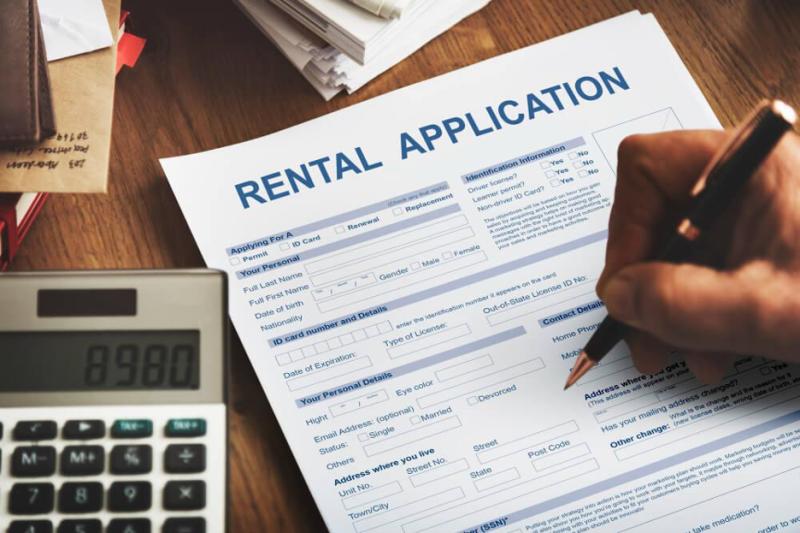

When providing a rental property to a potential tenant, you’re surrounded by many laws, rules, regulations, and interests. That’s when the purpose of a rental application comes in handy. These applications help collect the personal information of prospective tenants, making it easier for you to make a final decision.
Although there’s no standard form of a rental application that renters must adhere to, there are ways in which you can prepare them according to federal guidelines. However, if you’re unfamiliar with the process of creating an application, there are some dos and don’ts you can use to avoid missteps and law violations.
A rental application is a document that gathers information from prospective tenants about what you want to rent out your property to. Most importantly, the document must request specific and lawful information which reflects the applicant’s potential.
When it comes to rental application fees, 67 percent of renters must pay approximately $50 for their application fees, plus the additional deposit expenses. That’s why making an accurate assessment is essential because it keeps you out of legal trouble and helps to avoid unnecessary costs.
Although there isn’t a standard rental application to follow, the document typically includes five main sections:
That said, the questions and their order may vary. However, the concept is the same; you want to learn as much as legally possible about your potential tenant.
Your rental application must be efficient but detailed enough to stand out. You can easily customize it to your preferences and needs, but there are some crucial points you must include in the application. Here are the top five dos all renters should rely on:
Every prospective applicant is concerned about the general background information about the property and renter. That said, the first few questions of the applications should include the following:
It’s essential to be direct about the type of tenancy you’re offering as it allows tenants to see their options and not get confused about the offering. Luckily, prospective applicants can use websites like Rentberry to go through different listings along with their application forms. At the same time, this helps you filter out tenants who aren’t interested in a periodic or fixed-term tenancy, and vice versa.
The deposits and fees section is crucial as it indicates the amount of expenses you require. It’s also essential to be upfront about the exact fee amount and mention that it’s non-refundable (if the state regulations allow it).
However, if you’re not considering a tenant for your property, you shouldn’t accept their application fee because it’s unnecessary. At the same time, if you reject an applicant and want to return their application fee, it’s advisable to do it before running a credit report.
Additionally, as a renter, you should check with your local and state house regulations before setting a fee. Some states are specific about collecting application rental fees. For example, in California, the renter can set a maximum screening fee of $35, plus they must provide a receipt.
It’s important to remember that some state laws set limits on security deposit or other additional fees. So, if you include these expenses in your application, ensure to specify whether it’s a fee or a deposit. If it’s a deposit, you can refund your tenant, but if it’s a fee, you’re unlikely to refund them.
The next section of your rental application form should be straightforward for your prospective tenants to fill out. Essentially, you can choose to:
Typically, all rental applications have two authorization sections in the end, named under the Consumer Report Disclosure and Authorization part. These two paragraphs allow you to acquire the applicant’s credit report and verify other information, such as:
To finalize the rental application, the potential tenant must sign under the authorizations, while you provide them with a copy of the application.
When dealing with a rental application for the first time, you might endure some difficulties along the way, but fear not! Fortunately, as a renter, you can learn the don’ts beforehand to prevent mistakes that can be deal-breakers in the long run. Here are the most common don’ts you should avoid at all costs:
If you want to find proper tenants who are willing to rent from you, it’s essential to put your contact information in the application form. You can’t expect to have a relationship with your tenant if they can’t reach out to you when there’s an issue or emergency.
Additionally, the omission of information is an immediate red flag for all applicants. Leaving out personal and important information on a rental application tends to leave prospective tenants confused and doubtful about your professionalism.
One of the most common don’ts renters tend to make is asking for private information that isn’t a requirement. Although most people think more information is better, some questions shouldn’t be included in an application form, such as:
Since the application form helps you conduct the tenant screening process, there are some functions that you should include – all of which relate to notices about the screening reports. Usually, you must require these notices to make things go smoother and avoid unnecessary steps in the future.
One of the most essential functions of rental applications is the authorizations form you need during the screening process. As mentioned, these authorizations allow you to dive deep into the applicant’s background and history to help make a decision.